LGBTQ+ people have loved wherever they have lived.
Whether they discovered love in antiquated Egypt or at cabarets in the 20s, the history of lesbian, gay, bisexual, and transgender persons and their famous love stories are rife with passion, loss, and advocacy.
Same-sex spouses, like everyone else, have drifted in and out of romance and endured joy and grief throughout history.
There have been several sorts of same-sex unions, ranging from informal, unofficial, and transient relationships to highly ceremonious unions that included marriage.
Same-sex partnerships were known in Ancient Greece and Rome, ancient Mesopotamia, some portions of China, such as Fujian province, and throughout ancient European history.
Increasingly prominent Christianity supported marriage for procreative goals, as did other ideologies and religions of the time.
The teachings of the Talmud, the Torah, and the Bible were seen as directly condemning the behaviors as opposed to nature and the Creator’s will and a moral failing.
Various sorts of same-sex unions become lawful in the twentieth and twenty-first centuries. Today, same-sex marriage is currently allowed in sixteen European nations as of July 2020.
Here are ten same-sex couples who have characterized queer romance over the centuries.
How did the term “gay” come to be?
Content
The word gay entered English in the 12th century from Old French “Gai,” which was most likely derived from a Germanic source.
The primary meaning of the word in English was “joyful,” “carefree,” “bright and flashy,” and it was often employed in speech and literature with this meaning.
When did homosexuality become legal in the United States?
Sexual actions between people of the same sex have been allowed in the United States since 2003, thanks to the U.S. Supreme Court decision in Lawrence v. Texas. Anti-discrimination legislation varies by state.
Which country was the first to legalize same-sex marriage?
The Netherlands, twenty years ago, became the first country in the world to legalize same-sex marriage.
10. Niankhkhnum and Khnumhotep

Their love has withstood the test of time – to be precise, ancient times. The two were Egyptian servants who lived approximately 2400 BC.
Khnumhotep and Niankhkhnum, royal court manicurists who waited on the pharaoh himself, were discovered buried together in King Unas’ tomb.
How do we know they were in a relationship? Their bodies were entangled, and their faces were nose-to-nose, as was customary for the deceased to be designated as married couples.
They were thought to be brothers when their tomb was unearthed in 1964. However, Egyptologist Greg Reeder became sure they were lovers in the late 1990s.
Niankhkhnum’s wife was represented in a dinner scene on the tomb, her face covered. In many of the situations, Khnumhotep takes the role of a wife.
Egyptologists believe that the names Khnumhotep and Niankhkhnum combined mean “united in life and death.”
9. Antinous and Emperor Hadrian
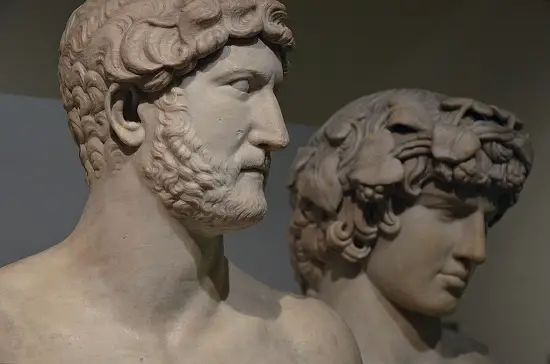
Romantic connections between older and younger men were widespread in ancient Rome, but Roman Emperor Hadrian’s affair with his young companion Antinous stands out.
Hadrian, who reigned the Roman Empire from 117 to 138 AD, had a unique friendship with Antinous and accompanied him on tour across the Empire. Antinous served as a member of the emperor’s entourage.
When Antinous died in 130 AD, drowning for unknown reasons, Hadrian was so sad that he mourned for years, adorning his court with sculptures of his fallen lover, designating stars and flowers after him, and hosting celebrations and athletic contests in his honor.
Antinous was subsequently deified and revered as a god by a cult that spanned the Empire until the fourth century.
8. Tommaso dei Cavalieri and Michelangelo
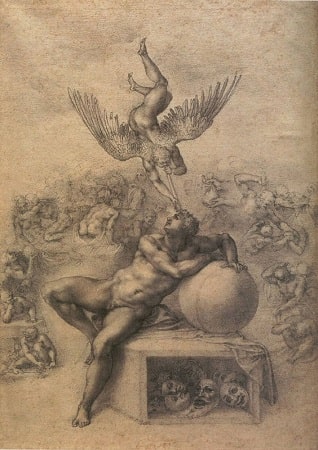
Despite his reputation for painting chapels, Michelangelo was far from a church paragon in his personal life.
They first met in 1532. Tommaso dei Cavalieri, 23, was seen as particularly attractive, meeting Michaelangelo’s 57-year-old idea of manly beauty.
Michaelangelo devoted a series of artworks and thousands of love poems to dei Cavalieri, describing him as the “spark of our century, exemplary all around the globe.”
Letters among the artist and the Italian aristocrat reveal that they had a mutual romance. De Cavalieri married in 1548, although the two maintained a close relationship until Michelangelo died in 1564.
7. Lorena Hickok and Eleanor Roosevelt
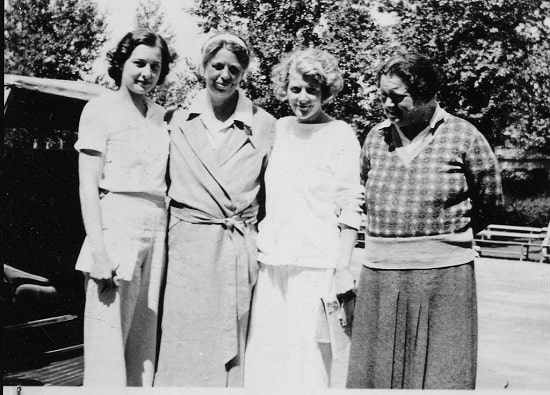
While we don’t know with certainty if the most powerful woman in the United States was a member of the LGBT community, it’s widely assumed she had feelings for journalist Lorena Hickok.
They first met in 1928, when FDR was campaigning for governor of New York.
Four years later, he was voted into office. By the time he was inaugurated as commander in chief, the first lady was already donning a sapphire ring by “Hick,” as she affectionately referred to Hickok.
The journalist dined with the Roosevelts every Sunday night, accompanied Eleanor to the opera, and was the first to interview her as she took on the presidency.
When they were apart, they expressed their love by phone and writing. Roosevelt even had a photograph of Hickock in her study.
6. Mercedes de Acosta and Greta Garbo
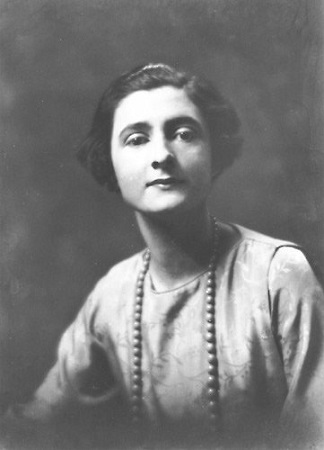
Mercedes de Acosta, a brilliant poet, playwright, and screenwriter, was an open and unapologetic lesbian who boasted about being able to have any woman she desired.
When she met Hollywood icon Greta Garbo in 1931, she knew who she was talking about.
Shortly after meeting, the two established a relationship, but it was never easy. Garbo extended her arms and heart to de Acosta at times, only to close them again.
They were inspired by each other, with de Acosta writing a screenplay for Garbo to play Joan of Arc that was never made.
Even after their romance was broken, Garbo addressed de Acosta 181 letters, cards, and telegrams.
When de Acosta became bankrupt in 1959, she offered them to the Rosenbach Museum & Library in Philadelphia.
“I would not have possessed the compassion or fortitude to burn these letters,” de Acosta remarked to the museum’s curator, William McCarthy.
“Greta’s and Marlene’s who were lovers… I can only hope… they will be treated with respect and shielded from the gaze of vulgar individuals.”
Garbo decided to completely bury their affair from her life, persuaded that de Acosta was bad luck and irritated because she was upfront about her homosexual connections in memoirs.
When de Acosta was dying, a friend requested Garbo write her a farewell letter, but Garbo declined out of anguish and dread.
5. Frank Merlo and Tennessee Williams

Tennessee Williams, who penned A Streetcar named Desire and Cat on a Hot Tin Roof, is among the most influential playwrights in literature who understood primal sexuality better than anyone.
He encountered Frank Merlo, a Sicilian-American actor 11 years his junior, in New Orleans when he was 36 years old. They were deeply in love a year later.
Following the popularity of Streetcar, the two traversed the globe in the late 1940s and 1950s, spending summers in Europe in search of creativity in Rome, Barcelona, and London.
Merlo became Williams’ second in command, bringing order to his life and assisting him in dealing with his ongoing despair.
After 14 years of relationship, the couple split due to betrayal and drug misuse on both sides. Merlo had terminal lung cancer soon after their breakup.
Suddenly, none of the prior scars mattered; Williams decided to return to care for his partner until cancer ended his life.
The loss of his genuine love overwhelmed the Tony winner, who became afflicted by theatrical ineptitude, drug misuse, and depression. He was in and out of treatment institutions throughout his later life.
4. Lord Alfred Douglas and Oscar Wilde

Lord Alfred Douglas, the inspiration for The Picture of Dorian Grey, captured the attention of Irish writer Oscar Wilde in a way that has been immortalized in literature.
In the summer of 1891, the two met. Even though Wilde was married with two sons, he began an ill-fated affair with Douglas, who was 19 years his junior.
Douglas was reputed to be extravagant and wild. Therefore their love story was often filled with heartbreak. They frequently argued and split up.
Douglas once transferred to the Grand Hotel and then sent Wilde the invoice on his 40th birthday after nursing his youthful lover through influenza only to acquire the ailment himself.
When Douglas’s father became apprehensive of their relationship, he initiated a campaign against Wilde, which resulted in his imprisonment for gross indecency (code for homosexuality) and a two-year prison sentence.
After Wilde’s release, the two attempted to renew their relationship, only to be separated by their families, who promised to restrict funding.
3. Ann Walker and Anne Lister

You may have heard of Anne Lister and Ann Walker from the excellent HBO series Gentleman Jack. Still, their marriage in 1834 was a watershed moment for lesbians and marital equality in the United Kingdom.
Lister was an affluent English landowner known for her global travels, openly LGBT lifestyle, and copious diaries recording her personal and sexual interactions.
In the 1820s, Lister met young socialite Ann Walker on several occasions, and by 1832, they had fallen in love.
They had communion on Easter Sunday at Holy Trinity Church in Goodramgate, York, commemorated with an official blue plaque as the scene of the first lesbian wedding in the United Kingdom.
Even though the marriage was not legally recognized at the time. Until her death in 1840, the couple resided together in Lister’s estate Shibden Hall.
2. Vita Sackville-West and Virginia Woolf
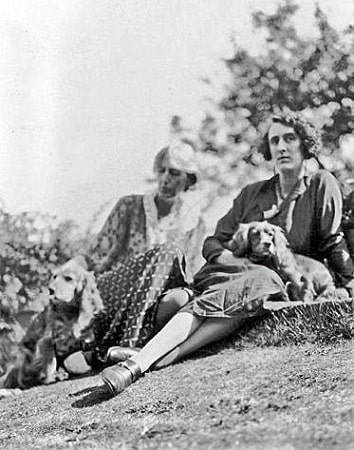
The ladies, Vita and Virginia, met at a 1920s house party when Woolf proposed to publish a book Vita had been operating on with her spouse for a few years.
They became companions and lovers after connecting through their emotionally distant parents. The two thrived artistically together.
West was the inspiration for the gender-shifting lead in Woolf’s Orlando: A Biography during their 10-year romance.
Woolf, who her half-brother had mistreated, told West about it, and with her, Woolf was able to have a positive sexual connection for the first time in her life.
Their relationship ended on respectful grounds in the late 1920s, and they stayed faithful friends. Their husbands were likewise quite respectful.
Although both ladies’ husbands knew about the romance, they never did much about it. West and her spouse had an open marriage, and Virginia’s husband also wished for his wife’s happiness.
1. Peter Doyle and Walt Whitman
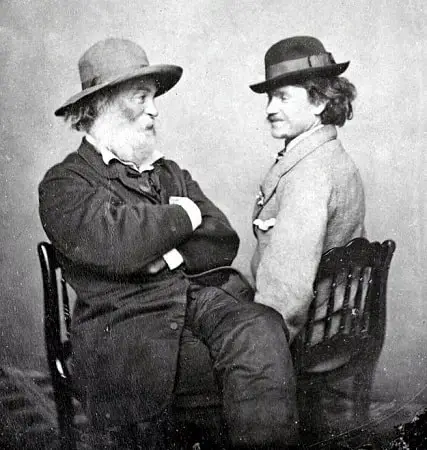
While some scholars argue that Walt Whitman was not gay, most concur that he had a romantic relationship with Peter Doyle, a streetcar conductor he encountered in 1865.
According to Doyle, the blokes approached each other after Peter’s shift at a hotel, and the two were inseparable for years.
“We recognized each other right away – I placed my hand on his knee — and we understood each other. He did not leave at the end of the journey but instead accompanied me back,” Doyle stated in 1895.
Whitman is thought to have camouflaged Doyle’s initials in his notes by employing the code “16.4,” — which represents the 16th and fourth letters of the alphabet.
Conclusion
Individual human people record history, with their ideas and ambitions dictating what they decide to record.
As a result, numerous events and nuances may be excluded from a narrative of a specific event or the tale of a great person’s life. This is notably concrete when it comes to so-called “gay history.”
Of course, “gay history” is simply history that mentions a person’s sexual orientation.
In the cultural contexts of ancient civilizations, same-sex partnerships were viewed as simply a further diversity of personal sexuality.
They were not regarded as “shameful” or “sinful” till after the introduction of Christianity, which vilified such connections not because they were “wrong” but because they were affiliated with other faith principles.
